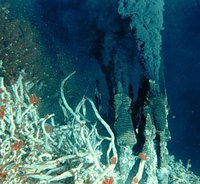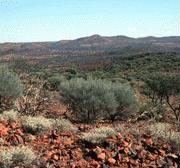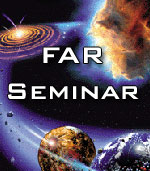
At deep-sea hydrothermal vents on Earth, many vent microorganisms are dependent on geothermal, atmospheric, and host rock sources for energy, not photosynthetic end-products. The subseafloor environment within oceanic crust provides an excellent opportunity to study such microbial communities, not only as a potential model for life outside our own planet, but also as a possible analogy for the earliest life forms on Earth. Very little is known about the subseafloor environment within oceanic crust, especially in old oceanic crustal fluids. Ridge-flank environments between 1 and 65 Ma constitute approximately 70% of the ocean basin area. Despite this potentially enormous habitable volume, very little is known about the presence, diversity, or distribution of microbial populations in off-axis igneous crust. This study examines a subseafloor environment in ridge-flank oceanic crust at Baby Bare Seamount, a sedimented basaltic outcrop located on 3.5 Ma crust on the eastern flanks of the Juan de Fuca Ridge. Using a novel extraction technique of driving two stainless steel probes several meters into the summit of Baby Bare, subcrustal fluids were obtained, and the presence of a subseafloor biosphere explored by analyzing the microbial community and geochemistry of these fluids for signatures of a thermophilic subseafloor habitat. Chemical, phylogenetic, and culturing results will be presented and compared with Axial Seamount, a young, active volcano located on the Juan de Fuca Ridge known to host a well-characterized subseafloor microbial population. The characterization of microbial communities adapted to life in the subseafloor will provide insight into metabolic processes and strategies for growth and survival in the subsurface of other volcanically active solar bodies.
 A Record of the Earliest (4.5-3.8 Ga) Surface Conditions on Earth?
A Record of the Earliest (4.5-3.8 Ga) Surface Conditions on Earth? Simulating Groundwater Radiolysis With Oxidation of Pyrite by Hydrogen Peroxide Solution
Simulating Groundwater Radiolysis With Oxidation of Pyrite by Hydrogen Peroxide Solution Exploring Planet-Forming and Debris Disks
Exploring Planet-Forming and Debris Disks Quantifying Water Production in Comets - The "Meter Stick" for Their Chemical Taxonomy
Quantifying Water Production in Comets - The "Meter Stick" for Their Chemical Taxonomy